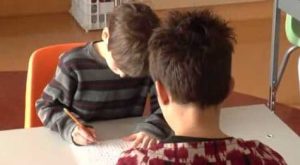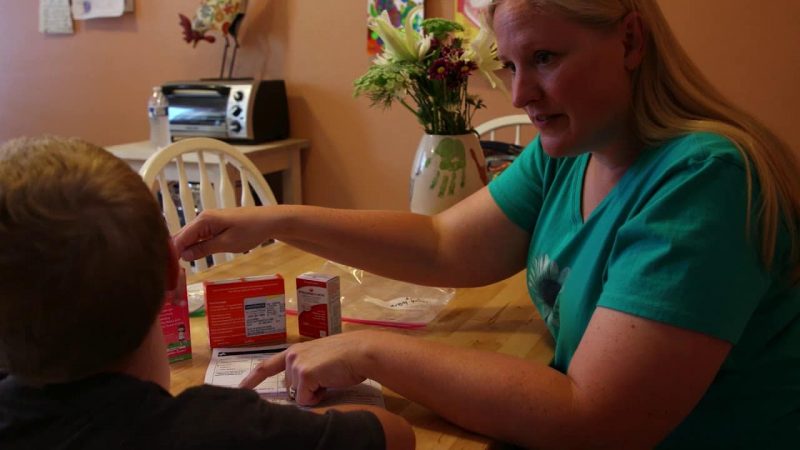If you have a child with ADHD, I completely understand what you must be going through. The biggest thing we struggle with is the impulsivity. Kids with ADHD rarely think of the consequences of their actions, whether good or bad, before they do something. From doctor to doctor and medication to medication, you get a moment of reprieve before you have to hop back to square one. Whether you homeschool or send your child to public school, here are 5 ADHD teaching strategies that work for me:
Always Use a Timer
Contents

Make Things a Competition
One of the things children with ADHD can feel successful with is doing things fast. Their brain and body are going at such a speed that is hard for them to slow down and do slower activities. Try to make lessons into a game or a competition so the student can feel successful. For example, you can do around-the-world multiplication, addition, subtraction, or division where the student must come up with the answer before one of their teammates.
Use Visual Tools

Keep Lessons Short
If your child is like mine, the attention span is somewhere between 5-15 minutes. Therefore, lessons need to be short and sweet. Instead of going into a lengthy lesson, try giving just the basics and help them along the way. If something is, too, difficult, however, the child will tend to rush through problems putting answers and not trying.
Get Down on their Level
Whether at home or in school, a child with ADHD needs someone to be in their face, so to speak. When explaining a task, a lesson, or an assignment, getting down at eye level and requiring their eyes to focus on your eyes helps the child to comprehend what is being asked. If their eyes aren’t focused on you, they may hear what you’re saying, but they’re not focusing it on their long-term memory meaning in two seconds it will be forgotten.
Use ADHD Teaching Strategies at Home

More children than ever are being diagnosed with ADHD or Attention Deficit Hyperactivity Disorder. If this is an unfamiliar term to you, you may not be aware of the symptoms associated with this disorder. You may question whether or not your child or children have ADHD. Recently, the number of children diagnosed within a class of 30 students is anywhere from 1 to 3, and boys are up to six times more likely to be diagnosed than girls. For more statistics, you can check out this article from ADDitude Magazine. Let’s discuss 5 unique ADHD symptoms associated with this disorder.
Unique ADHD Symptoms
With so many disorders being diagnosed in children, it’s good to know some symptoms that are unique to ADHD. The three main symptoms are Hyperactivity, Impulsivity, and Inattention, but there are specific symptoms of each category that stand out for this disorder:
- Running or Climbing Excessively: One main symptom of ADHD is when you witness your child running or climbing excessively. Yes, most children have an abundance of energy and like to run or climb. However, if you see your child running in circles for hours on end, climbing harmful objects without reason, swinging on inappropriate things and acting extremely reckless without reason, it could be a symptom of ADHD.
- Lack of Appropriate Self Control: Children learn at all different paces, depending on diet, intelligence, and their environment. If your child shows a lack of appropriate self-control for their age, it could be a symptom of Attention Deficit Hyperactivity Disorder. This could include the inability to wait their turn, either blurting out and consistently speaking over others, excessive fidgeting in line, darting away from you in stores, parking lots, or anything in which they display a complete lack of control over their actions.
- Fidgeting or Shaking Excessively: Constant movement is a huge symptom of ADHD, and this includes fidgeting or shaking excessively. This could include shaking their leg while sitting, constantly messing with clothing, or other items in their vicinity, or even snapping their fingers obsessively. Because of the “Hyperactivity” part of this disorder, they have a subconscious need to move all the time.
- Inability to Focus: If your child is tested for ADHD, one of the things the doctors look for is an inability to focus. Children have small attention spans as it is, but if your child shows a lack of appropriate attention span for their age, it could be a symptom of Attention Deficit Hyperactivity Disorder. This may be in the form of not sitting still, but it could also be seen through their ability to listen. Some children with ADHD may not process what you are saying unless you have their complete undivided attention.
- Extremely Forgetful: Does your child seem to be extremely forgetful? This, too, could be a symptom of ADHD. Because their attention spans are very small and they are constantly on the go, children with ADHD may not remember where they placed things, forget to do chores and other things that may seem easier to other children. Being easily distracted, they may have a tough time with responsibilities.
Granted, these symptoms alone can not diagnose ADHD. If you suspect your child may have Attention Deficit Hyperactivity Disorder, talk to their doctor and ask about getting your child tested. With therapy and the right medications, most of the symptoms can be managed and your child can have the best chance at succeeding in life. We hope this information about 5 unique ADHD symptoms has been helpful!
Does your child have ADHD? What kind of symptoms did he/she exhibit that led to their diagnosis? Share with us in the comment section!


